If you upgraded to MacOS Sierra, then you are likely familiar with its headlining features, whether you are using Siri to speak to your Mac, unlocking it with an Apple Watch or cutting and pasting from your Mac to your iPhone or vice versa with the universal clipboard. You might also be using iCloud to sync your data across your devices or to optimize your storage while using Apple Pay to shop on your Mac while watching a video in Sierra’s PIP window.
In addition to these big-ticket items, some smaller features may have escaped your gaze. Let’s bring them into focus to help you get the most out of MacOS Sierra.
1. App tabs
Tabs, they’re not just for browsers anymore. With MacOS Sierra, you can use tabs in apps other than Safari (or your browser of choice). Open Finder or Maps or, for example, and hit Command-T to open a new tab. Other apps such as Mail and TextEdit let you use tabs but don’t support the Command-T keyboard shortcut. For those apps, a tab will open when you use the File menu to open a New View Windows (in Mail) or New file (in TextEdit).
If a new window opens instead of a tab, go to System Preferences > Dock and set Prefer tabs when opening documents to Always.
And if you find yourself with multiple windows scattered across your desktop for a single app, you can combine them into one neat-and-tidy tabbed window by going going to Window > Merge All Windows.
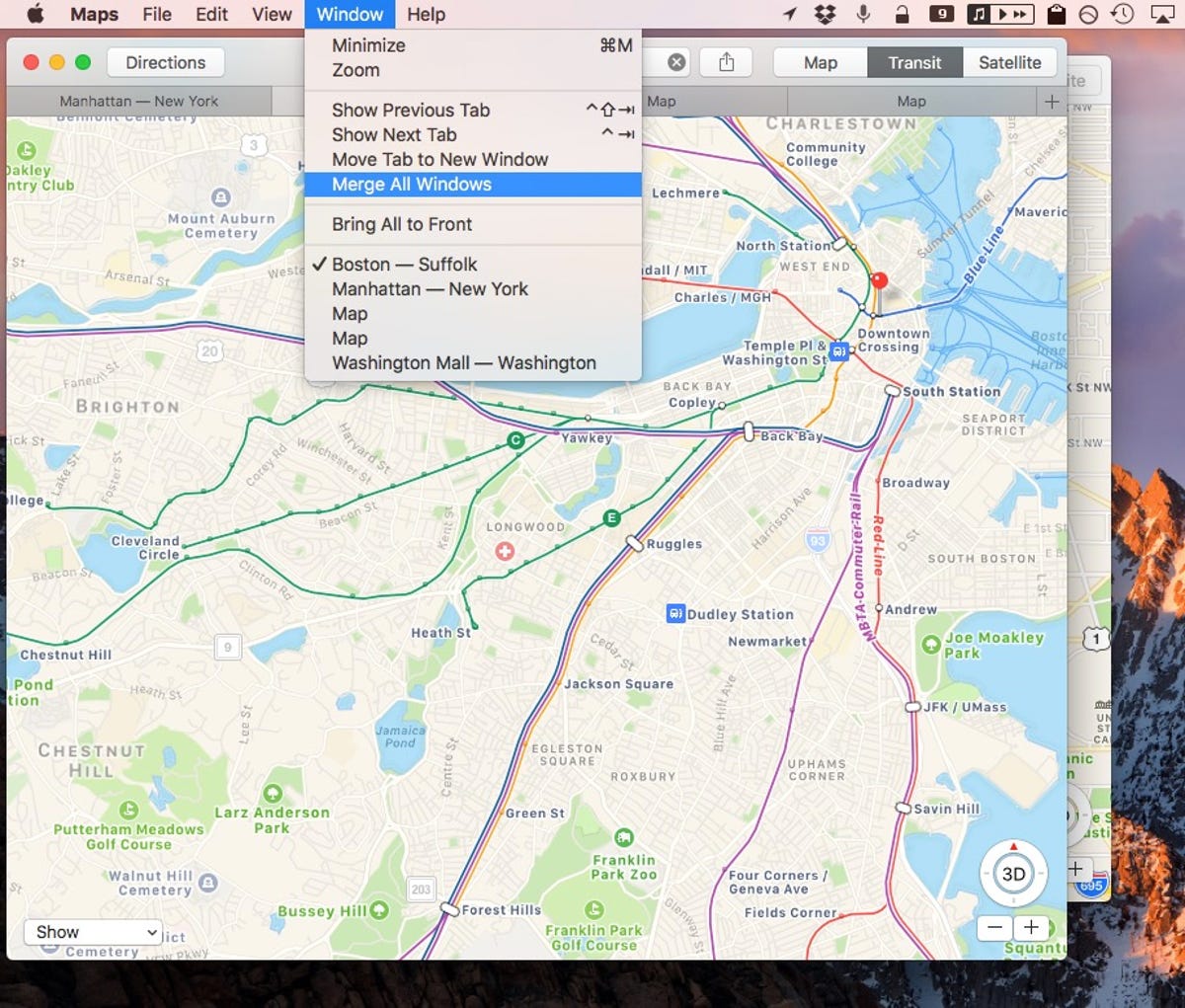

Screenshot by Matt Elliott/CNET
2. Mail filters
The stock Mail app offers filters to help you sort through your inbox. At the top of your inbox is a small, circular button with three lines of decreasing length. Click on it to filter your inbox. It defaults to showing you all of your unread messages, but if you click on the blue text, you can filter using other criteria.
If you don’t see this button, then you are likely using Mail’s classic layout. To disable that view, go to Mail > Preferences > Viewing and then uncheck the box for Use classic layout.
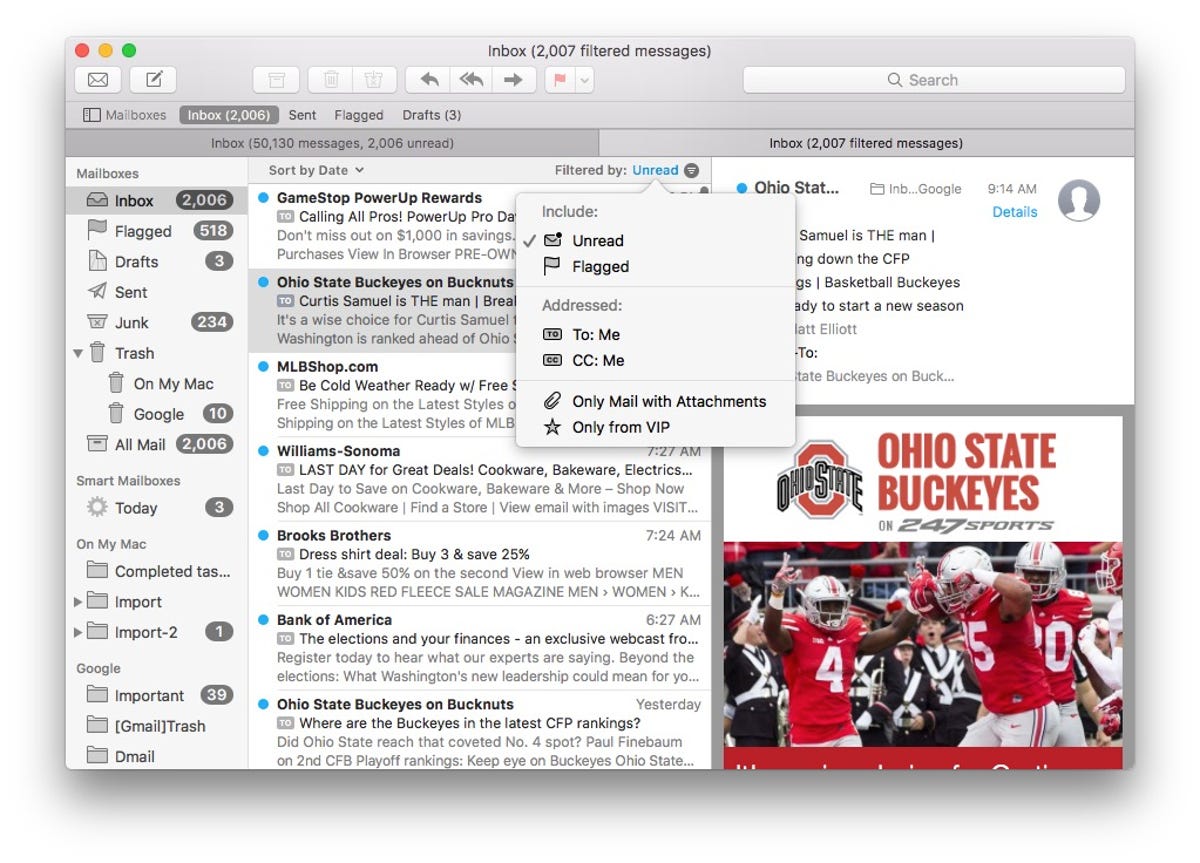

Screenshot by Matt Elliott/CNET
3. New editing tools in Photos
The big feature of the updated Photos app are the new Memories albums it generates. Tucked inside the app are two new editing tools: Brilliance and Markup.
When editing a photo, the new Brilliance slider can be found under the Light section in the Adjust menu. Apple states it “brightens dark areas and pulls in highlights to reveal hidden detail and make your photo look richer and more vibrant.” To me, it effectively combines the Highlights, Shadows, Brightness and Contrast adjustments.
At the bottom of the column of edit tools along Photos right edge, click the triple-dot button to access the new Markup tool. As with Mail and Preview, you can use Markup to add text, arrows, lines and other annotations to a photo.
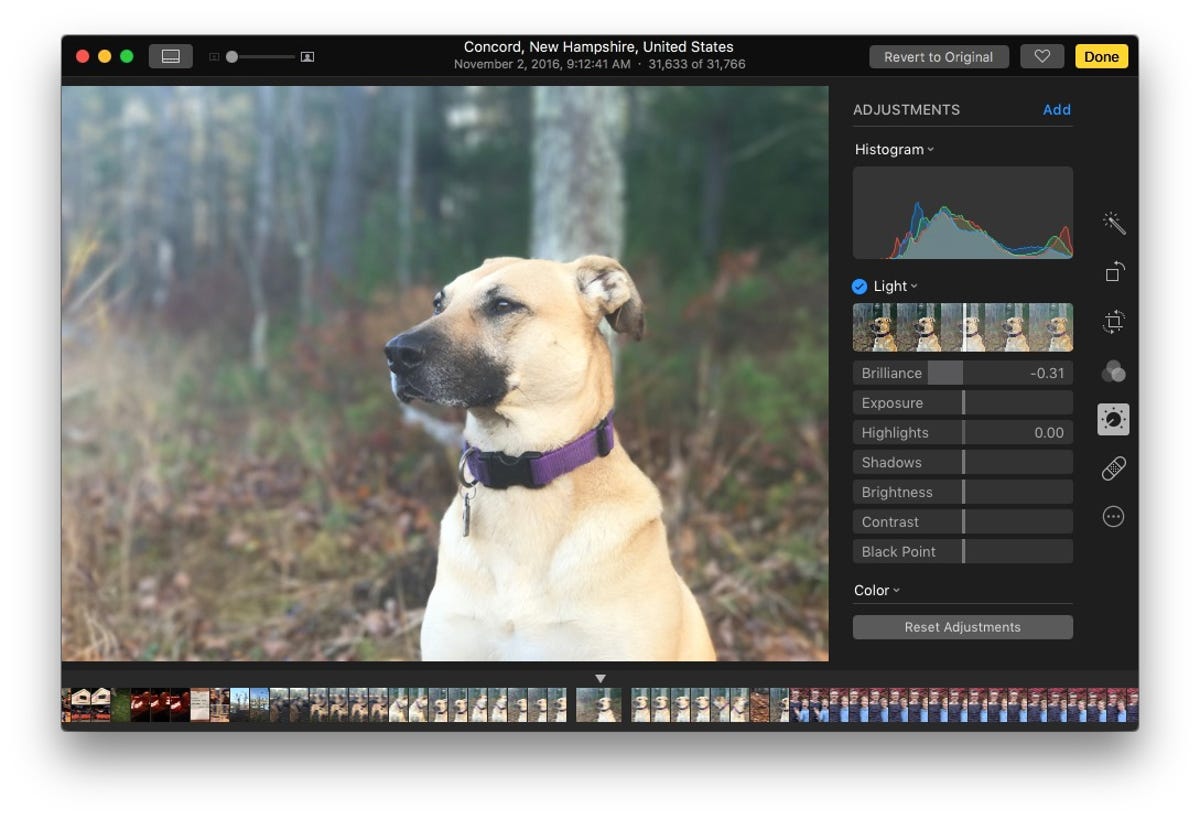

Screenshot by Matt Elliott/CNET
4. Notes collaboration
You can now share a note in the stock Notes app to collaborate on a note-taking exercise. Open a note and click the new share button at the top of the window. Select how you’d like to send the invite, enter a contact’s name and click Share. Once accepted, invitees to the note can add, edit and remove content.
5. Lyrics in iTunes
For your next karaoke party, bust out your Mac. iTunes now lets you view a song’s lyrics as you listen (or sing loudly and poorly) along. To see the lyrics of the song that’s playing in iTunes, click the Up Next button and then click Lyrics. You’ll need to scroll manually to keep up as the song plays, which diminishes the karaoke aspect of this feature, but it’s still a preferable way to view lyrics than using Google which sends you to an ad-laden song-lyrics site.
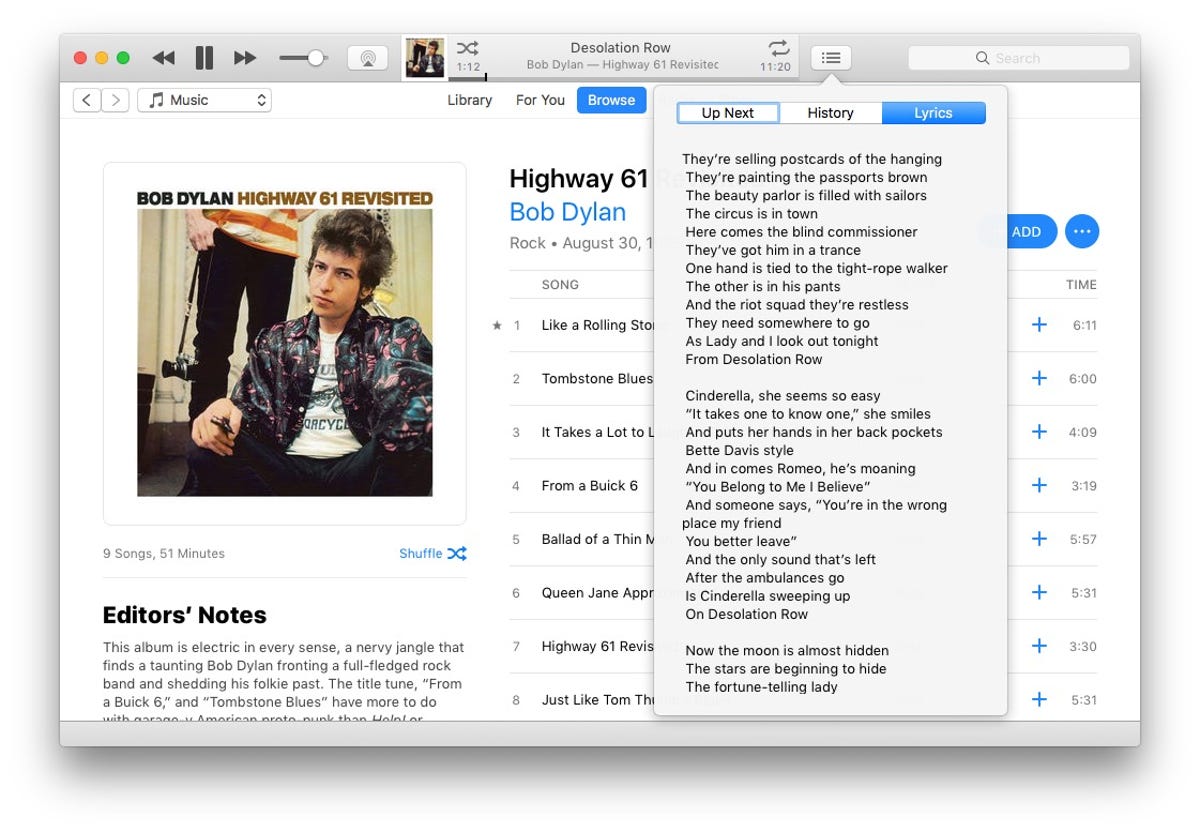

Screenshot by Matt Elliott/CNET
6. Previews and tapbacks with Messages
Messages on MacOS Sierra didn’t get all of the fireworks that its iOS analog did. You don’t get bubble and fireworks effects, stickers or iMessage apps on the Mac, but you do get a couple of useful features.
The first is rich URL previews. When you send or receive a link, Messages provides a bit of context by way of the title and an image of the page of the link.
The second is tapbacks for quick replies. Right-click on a message bubble and choose Tapback to send a quick thumbs-up or -down, heart or Ha-ha.
7. More secure and flexible Safari
To improve security (and battery life), Safari has favored HTML5 over Flash, Java and other plug-ins. With Safari 10 in MacOS Sierra, you can have your cake and eat it, too. That is, Safari avoids Flash and other plug-ins but allows you to use them on a site-by-site or instance-by-instance basis.
Let’s use Flash as an example, since it’s the most widely used plug-in. On sites that offer both HTML5 and Flash Safari defaults to HTML5 by telling the site that you don’t have Flash installed, even if you do. For sites that require Flash to show content, Safari displays a link to install or enable Flash. When you click on it, Safari then admits to the site you are visiting that you have Flash installed and asks you if you want to Use Every Time or Use Once for the site.
This arrangement keeps Flash use to a minimum without forcing you to use an alternate browser to view content that requires Flash or another plug-in.
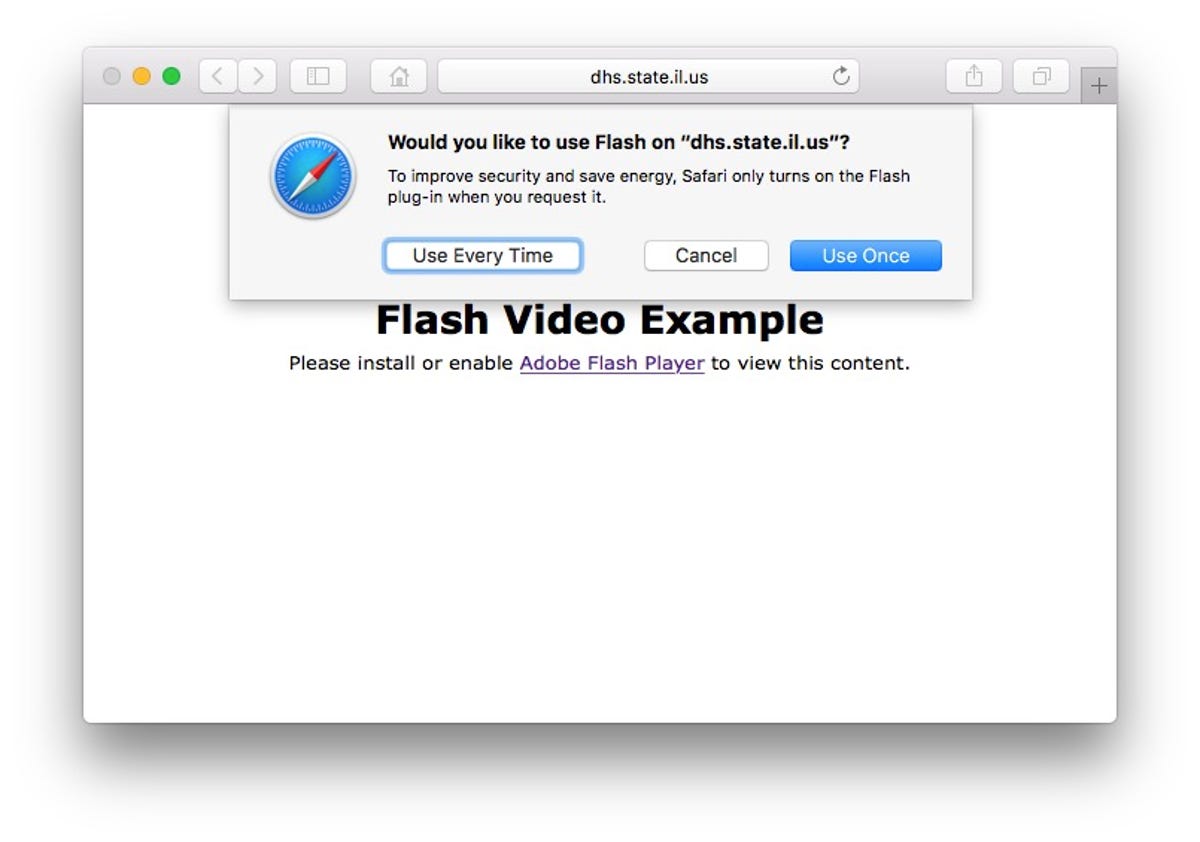

Screenshot by Matt Elliott/CNET
8. Two new Keyboard options
You likely tap out as many words texting on your phone as you do typing on your Mac. To bring the two experiences in line, Apple has added two new keyboard features to MacOS Sierra to make typing on your Mac feel more like typing on your phone. Head to System Preferences > Keyboard > Text and you’ll find two new options, Capitalize words automatically and Add period with double-space.
9. Return of RAID Assistant
Apple removed RAID support in Disk Utilities in OS X El Capitan, but it makes its triumphant return in MacOS Sierra. Open Disk Utility and under the File menu you’ll find a familiar line at the bottom for RAID Assistant. With it, you can create a Striped (RAID 0) array for speed or a Mirrored (RAID 1) array for data redundancy, should your Mac have multiple hard drives.
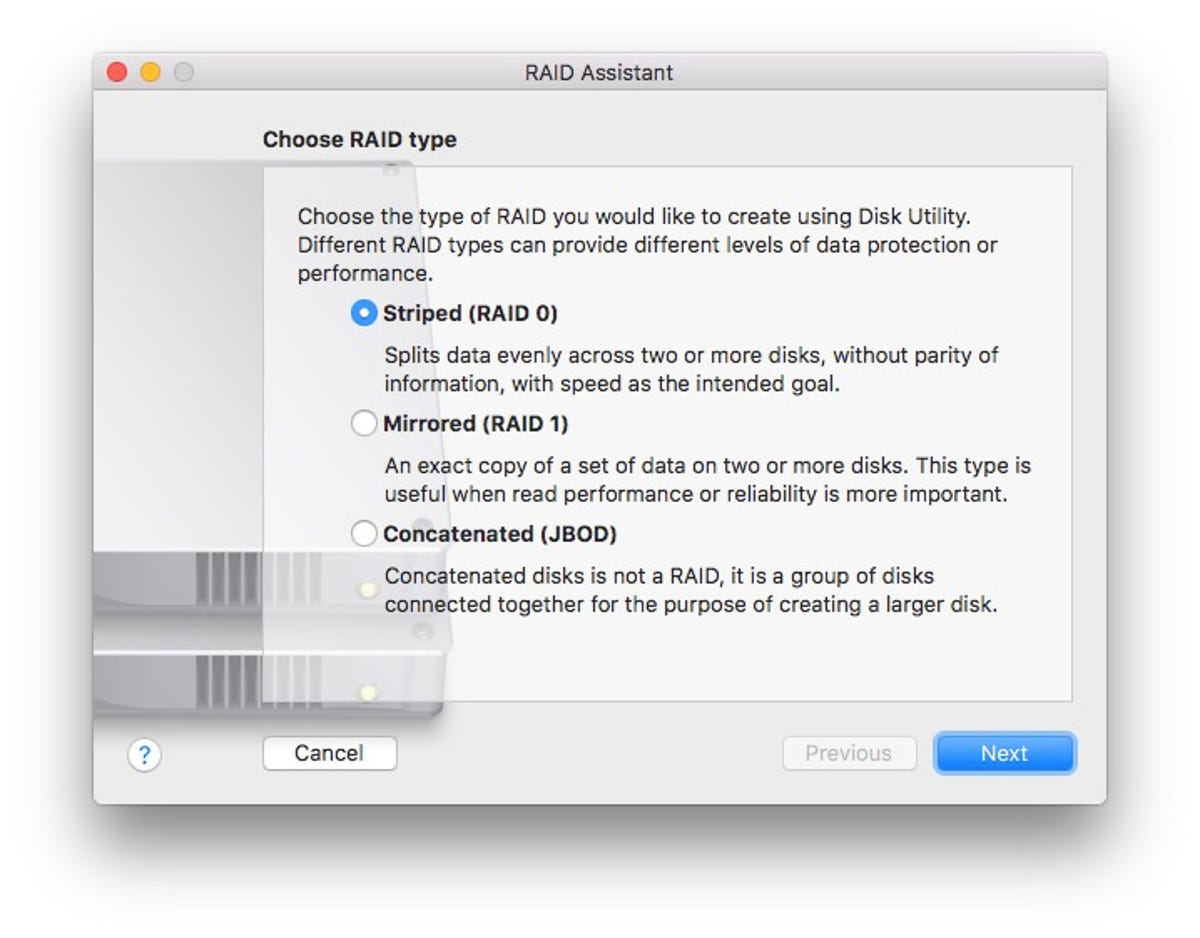

Screenshot by Matt Elliott/CNET
10. Game Center is gone
Consider this last item addition by subtraction. As with iOS 10, MacOS Sierra waved goodbye to Game Center. If you do play games tied to your Game Center account, that information is included right in the game by way of Apple’s GameKit, leaving you with one less stock app taking up space on your Mac.




